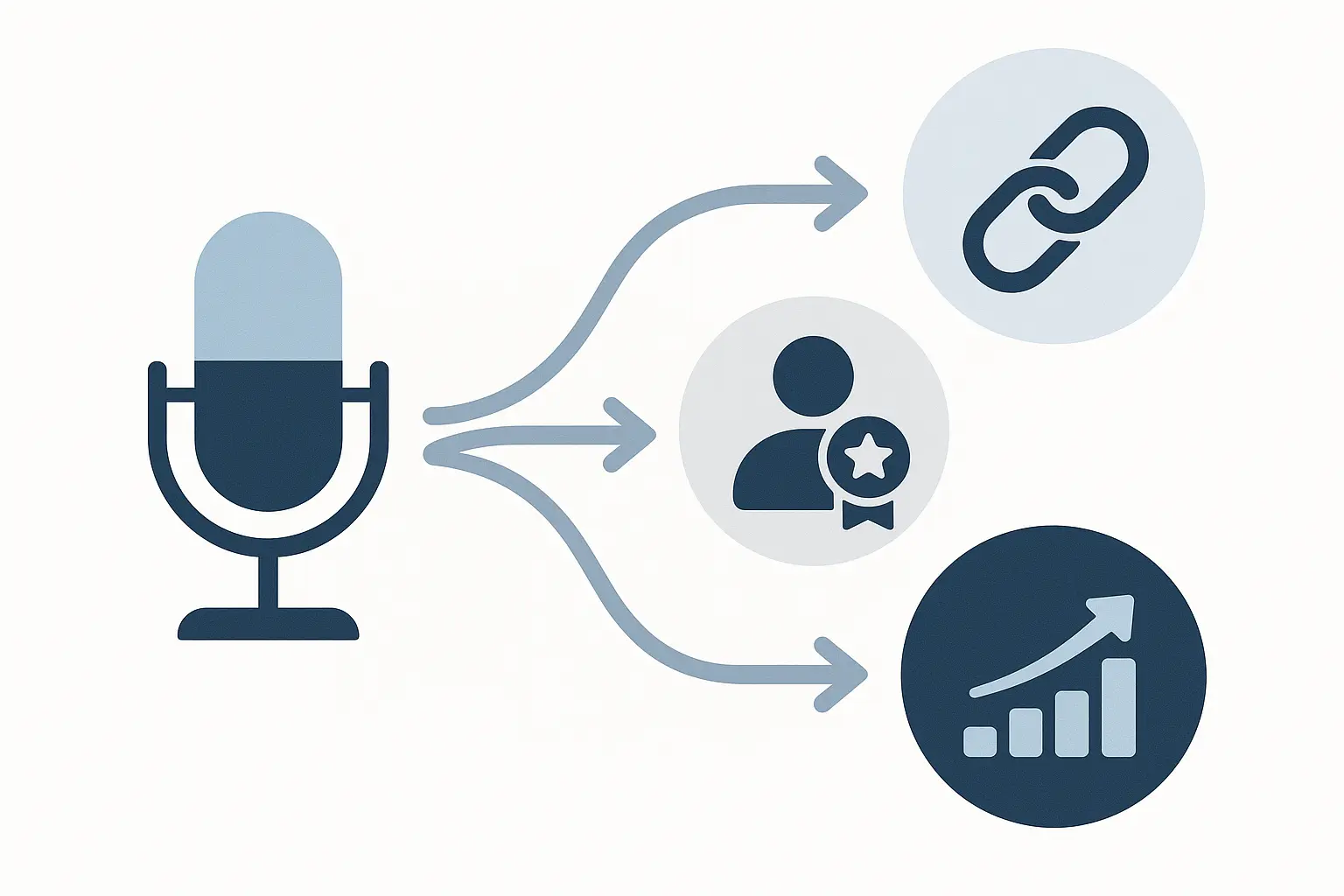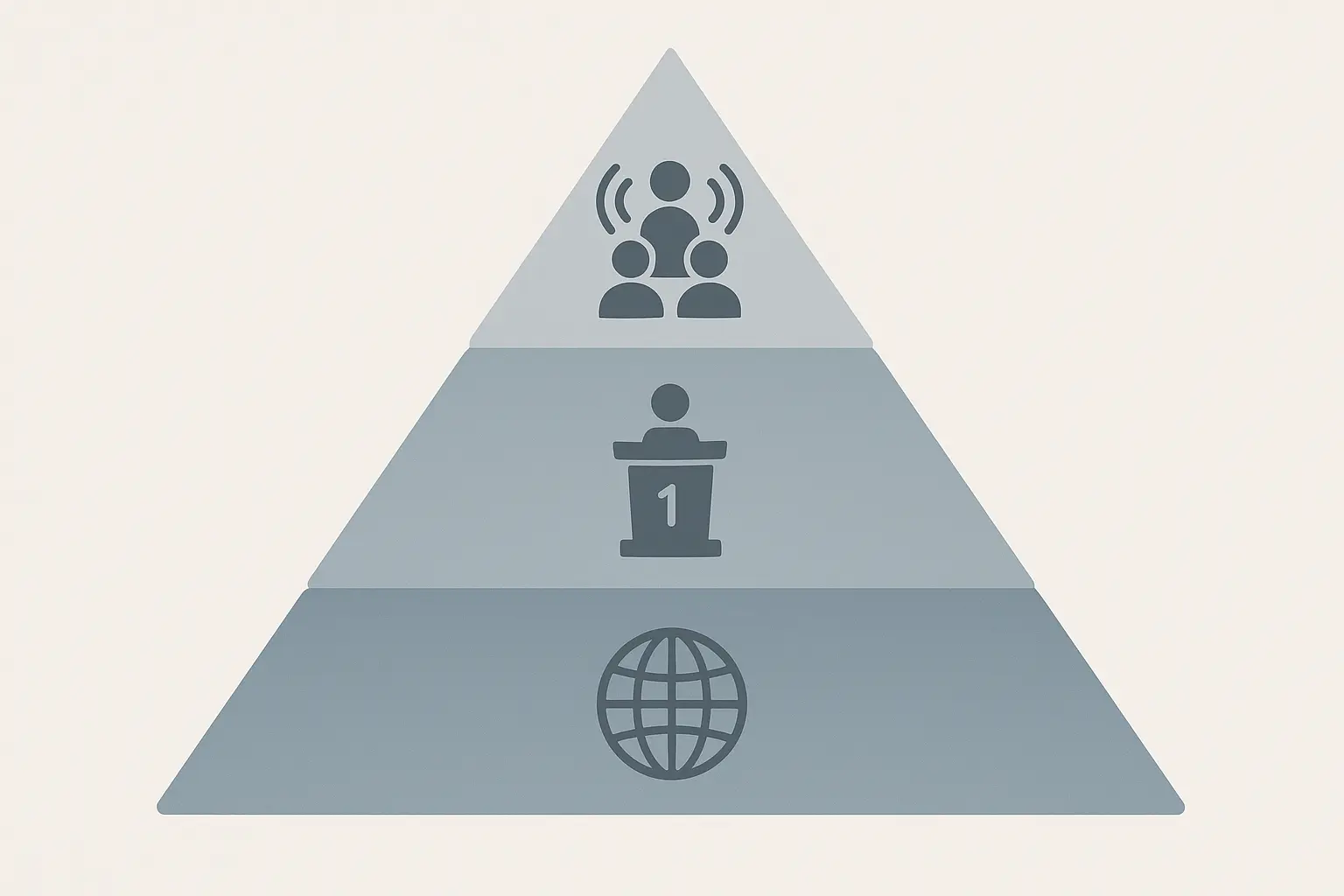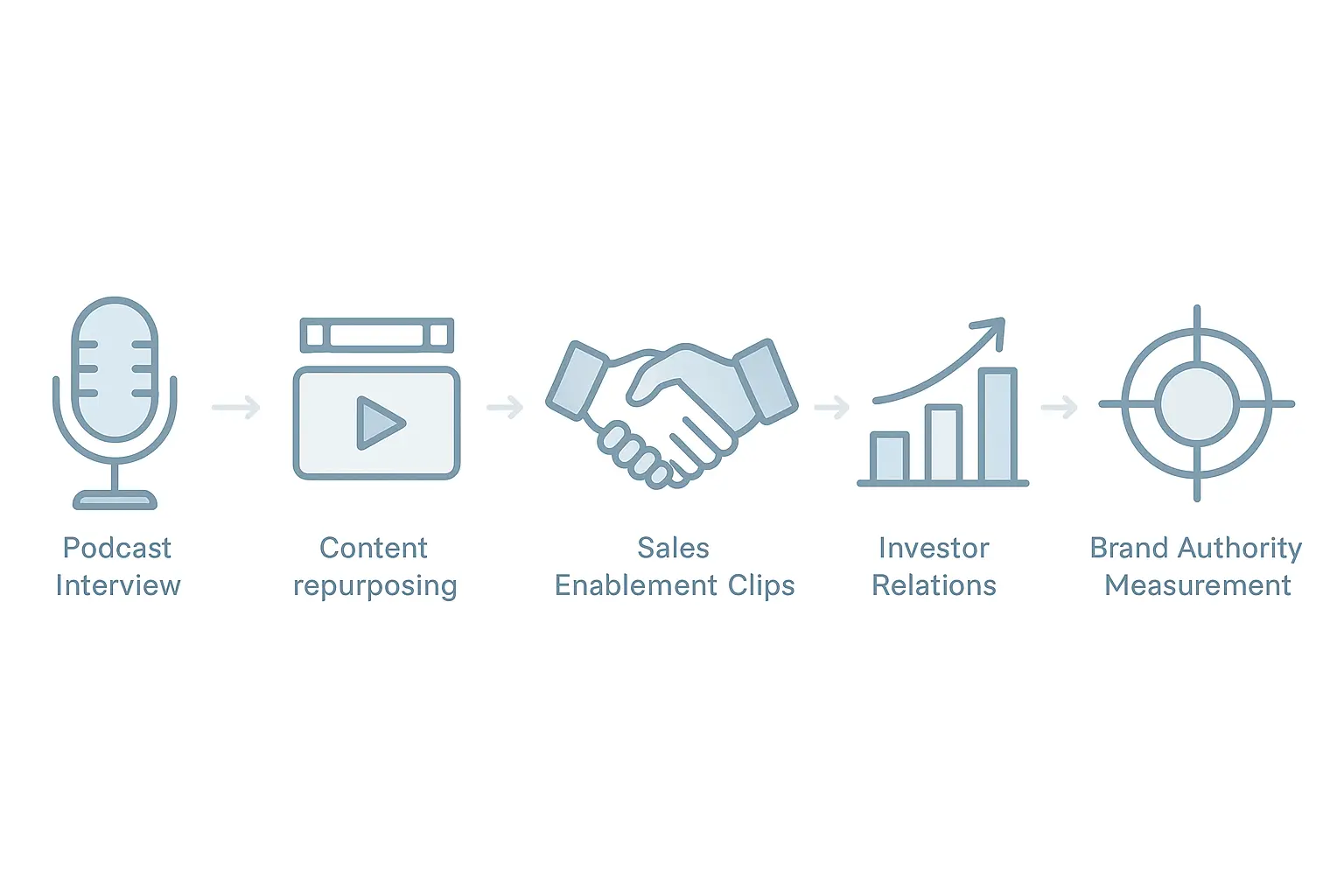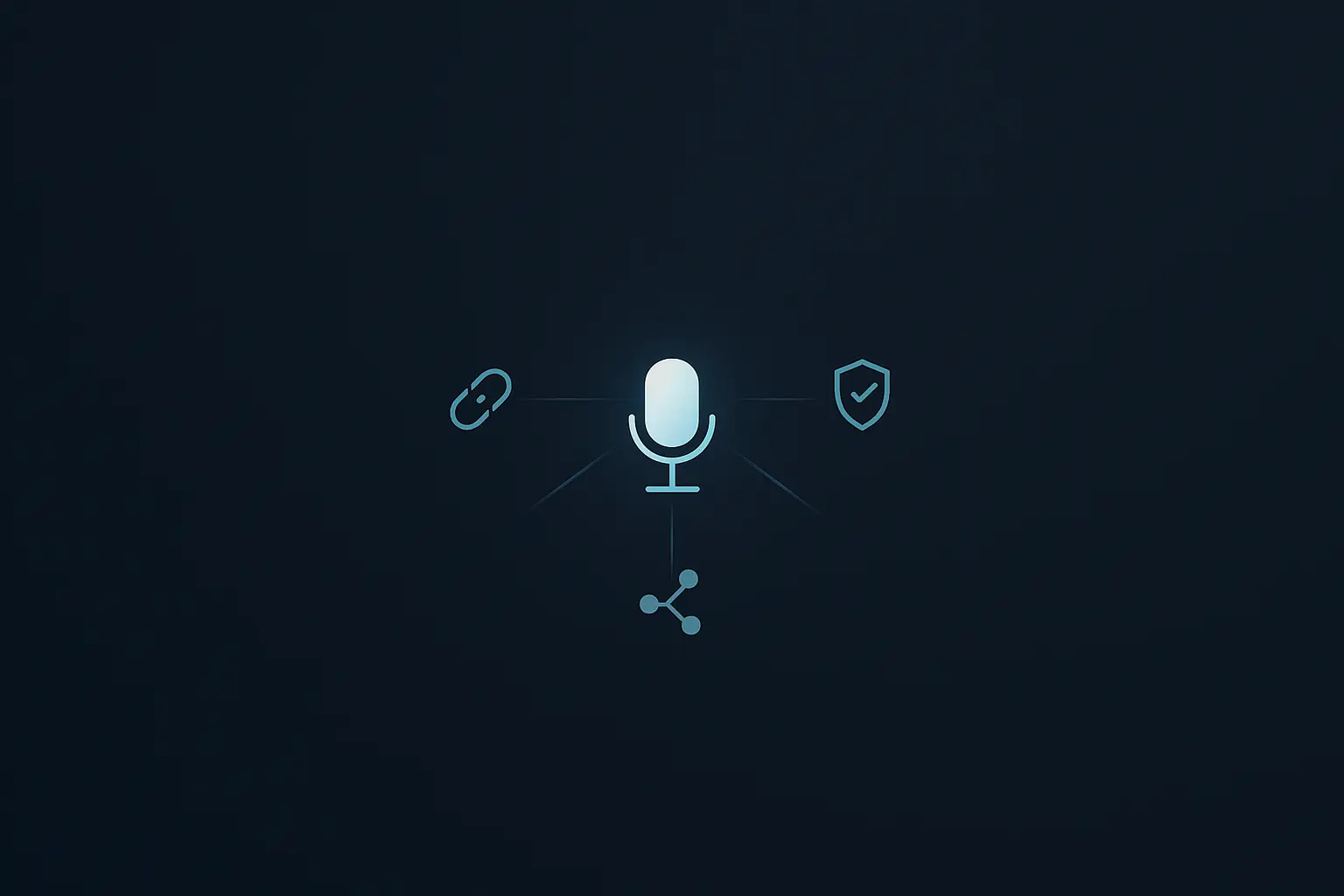Ever feel like you’re hitting a wall with link building for your B2B tech clients? You’ve tried guest posting until your fingers are sore, your cold outreach emails vanish into the void, and securing a single, high-quality backlink feels like a monumental undertaking. In the crowded, skeptical world of B2B technology, getting noticed—and earning trust—is harder than ever.
What if there was a strategy that not only built powerful backlinks but also established your client’s CEO as a thought leader, generated months of social media content, and warmed up cold leads, all from a single hour of conversation?
This isn’t some secret new tactic. It’s a podcast tour—and for agencies serving B2B tech, it’s one of the most powerful—and underutilized—strategies available.
Why Traditional Link Building Is Falling Short for B2B Tech
For years, the link building playbook has been fairly standard. But for niche B2B tech companies, these methods are showing their age:
- Guest Post Saturation: Every relevant blog has been pitched a hundred times. Standing out is tough, and many platforms now charge for placements.
- Relevance Gap: Finding high-authority sites that are truly relevant to specialized tech (like AI in logistics or cybersecurity for fintech) is a challenge.
- The Trust Deficit: Cold outreach often feels transactional. You’re asking for a link, not building a genuine relationship or providing value upfront.
While these methods still have their place, they often lack the scalability and deeper brand-building impact that B2B clients desperately need to stand out.
The New Authority Engine: What Is a Podcast Guest Tour?
Let’s get one thing straight: this isn’t about convincing your client to start their own podcast. A podcast tour is a strategic campaign where a key executive from your client’s company appears as an expert guest on a series of relevant, industry-specific podcasts.
Think of it as a digital speaking tour. Instead of traveling to conferences, your client’s expert joins hosts from their home or office to share knowledge with highly engaged, niche audiences. Research shows that 74% of podcast listeners tune in specifically to learn new things, making them the perfect audience for your client’s expertise.
The magic isn’t just in the conversation; it’s in the digital footprint it creates.

The Triple-Threat ROI of Podcast Guesting for Your Clients
A well-executed podcast tour delivers a powerful trifecta of results that go far beyond a single backlink. It builds assets that compound over time and directly impact your client’s bottom line.
1. High-Authority Backlinks Without the Cold Outreach Grind
When your client appears on a podcast, the host nearly always creates a dedicated episode page on their website. This page includes show notes, a summary, and—most importantly—a link back to the guest’s website.
These aren’t just any links. They are often:
- High-Authority: Established podcasts have strong domain authority.
- Contextually Relevant: The link is surrounded by content directly related to your client’s expertise.
- “Dofollow” by Default: Most podcast show notes links are dofollow, passing valuable SEO equity.
- Trustworthy: The link is an editorial endorsement from the host, not a paid placement.
This is a natural, authority-driven way to earn the kind of links Google loves, without sending a single “can I get a link?” email.
2. Building Unshakeable E-E-A-T and Personal Brands
Google’s E-E-A-T guidelines (Experience, Expertise, Authoritativeness, Trustworthiness) are no longer just a suggestion—they’re a core component of how it ranks content. Google wants to see proof that real experts are behind a brand.
A podcast tour is one of the most effective ways to build E-E-A-T at scale. Every episode your client’s executive appears on acts as a public citation of their expertise. When someone searches for their name or company, they won’t just find a website; they’ll discover a library of conversations on respected platforms, validating their authority.
This creates a “surround sound” effect. By appearing on multiple shows within their niche, your client’s brand starts to feel ubiquitous and becomes synonymous with their area of expertise.
3. The Content Multiplier: One Hour of Talk, Months of Content
A single 45-minute podcast interview is a content goldmine. For agencies managing client marketing, this is a massive efficiency win. One recording session can be repurposed into a full suite of assets.
This is the “content multiplier effect” in action:
- Full Episode: The primary asset for the podcast’s audience.
- Blog Post: Transcribe the interview into a “key takeaways” article for the client’s blog.
- Video Clips: Cut the best 2-3 minute segments for YouTube Shorts and LinkedIn videos.
- Audiograms: Create shareable audio snippets with branded graphics for social media.
- Quote Graphics: Pull the most powerful quotes and turn them into visuals for Twitter and Instagram.
This transforms a one-time activity into a cornerstone of a comprehensive omnichannel SEO strategy, feeding multiple marketing channels with authentic, expert-led content for weeks or even months.

How to Pitch and Scale a Podcast Tour for a B2B Tech Client
Ready to put this into practice? A successful podcast tour is built on a methodical process.
-
Identify the Expert & Their Core Message: Work with your client to identify the best spokesperson (often a founder, CEO, or head of product). Then, define three to four core topics they can speak on with genuine passion and authority. These topics should solve a problem for the podcast’s target audience.
-
Build a Hyper-Targeted Podcast Hit List: Search podcast directories (like Apple Podcasts, Spotify, and Listen Notes) for shows your client’s ideal customers listen to. Focus on shows with engaged audiences, even if they aren’t massive. A niche show with 1,000 dedicated listeners is better than a general show with 50,000. Using tools for AI-powered SEO automation can help you rapidly analyze potential shows for audience alignment and domain authority.
-
Craft a Pitch That Solves a Problem: Don’t lead with, “I’d like my client to be on your show.” Instead, frame your pitch around the value your client can provide to the host’s audience. Propose specific, compelling topics. For example: “I noticed you haven’t covered [Specific Topic] yet. My client, [Name], just led a project that resulted in [Impressive Result] and can share three actionable steps for your listeners to achieve the same.”
-
Execute, Track, and Repurpose: Once booked, help your client prepare. After the episode airs, track the backlink to ensure it’s live and correct. Then, execute your content repurposing plan to maximize the value of each appearance.

Frequently Asked Questions (FAQ)
How many podcasts should my client appear on?
Start with a goal of four to six high-quality appearances per quarter. Consistency is more important than volume. The goal is to build a steady drumbeat of authority.
What kind of results can we expect?
Beyond the direct backlink, you’ll see an increase in branded search traffic and referral traffic from podcast apps. The long-term impact is a stronger brand and improved E-E-A-T signals, which can lead to better overall search rankings.
Does my client need to be a professional speaker?
Not at all. Authenticity and passion are more important than a polished delivery. Most podcast hosts are excellent at guiding the conversation. The key is that your client genuinely knows their subject matter.
What if the podcast doesn’t offer a backlink?
While the link is a primary goal, don’t discount the brand-building value. An appearance on a major, highly respected podcast in your client’s industry can be incredibly valuable for authority and audience reach, even without a direct link.
Beyond Rankings: The True Impact on Your Client’s Growth
A podcast tour strategy is about playing the long game. It’s a shift from chasing individual keywords to building a resilient, authoritative brand that naturally attracts customers and links.
For your agency, it’s a chance to offer sophisticated, high-impact SEO services that tie directly to your client’s business objectives. You’re not just building links; you’re building legacies, one conversation at a time.

